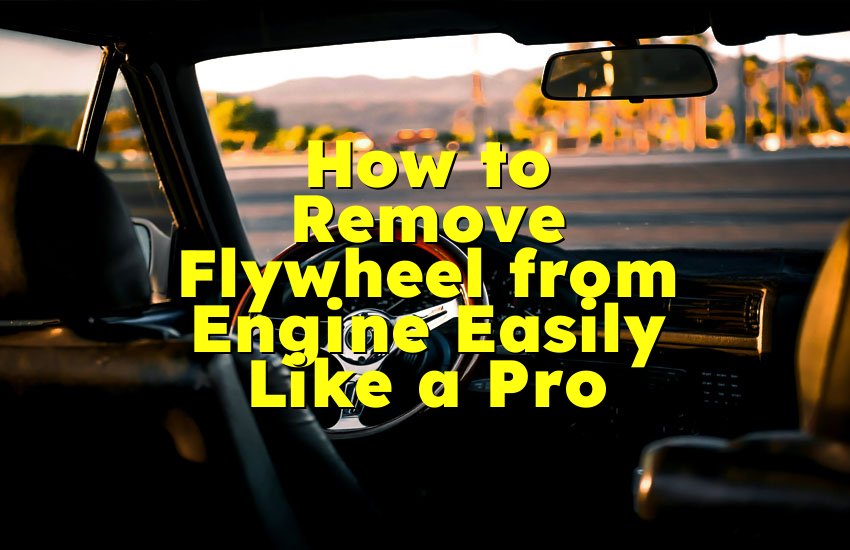As an Amazon Associate, I earn from qualifying purchases at no extra cost to you.
How to Drain Coolant from Engine Block: Expert Guide
You might be feeling a bit nervous about working on your car's engine, especially when it comes to something like draining coolant from the engine block. But don't worry — you're in the right place. You can do this yourself with some simple tools and clear steps. Draining the coolant is important when you want to replace it, fix leaks, or prepare your car for winter. In this article, I will walk you through everything you need to know to safely and easily drain coolant from your engine block, even if you've never done it before. Let's get started!
Find the Right Tools and Prepare Your Car
Before you start draining the coolant, you need to get your car and tools ready. This step is very important because it helps you avoid accidents or messes later on. You will need a few basic tools like a wrench, a drain pan, gloves, and safety glasses. Also, check your car's manual to find the location of the radiator drain plug or petcock valve. Make sure your engine is cool before opening anything — hot coolant can burn you badly.
Start by parking your car on a flat surface and turning off the engine. Let it cool down for at least an hour if you recently drove it. Once cool, open the hood and find the radiator cap, but do not remove it yet. The reason for this is to allow air to flow in and help the coolant drain more smoothly. Put on your gloves and safety glasses to protect yourself from spills or splashes.
Next, place the drain pan under the radiator's drain plug. If you can't find the drain plug on the radiator, check if your car has a drain plug on the engine block itself. This is usually a small bolt or plug near the bottom of the engine. Have some rags ready for cleaning any spills. Once you have everything set, you are ready to open the drain plug slowly and start draining.
- Gather basic tools like wrench, drain pan, gloves, and safety glasses
- Find radiator drain plug or engine block drain plug using car manual
- Let the engine cool completely before starting
- Park car on a flat surface and open the hood
- Place drain pan under drain plug to catch coolant
- Wear gloves and safety glasses for protection
- Prepare rags for cleaning spills
Drain the Coolant from the Radiator and Engine Block
After getting everything ready, the next task is to carefully drain the coolant. This can take some time, so be patient. Slowly open the radiator drain plug or petcock valve by turning it counterclockwise. The coolant will start to flow out into your drain pan. If you have a drain plug on the engine block, open that too, so you can remove all the old coolant. Make sure the coolant drains completely because leftover coolant can cause engine damage or cooling problems.
Keep an eye on the flow. Sometimes coolant drains slower if the plug is clogged or if the car has been sitting for a while. You can gently lift the radiator cap to help air enter and speed up draining. Be careful not to remove the radiator cap when the engine is hot because it can spray hot coolant out. After the coolant stops flowing, close the drain plugs tightly to prevent leaks when you refill the system.
Don't forget to properly dispose of the used coolant. Old coolant is toxic to people, pets, and the environment. Put the coolant in a sealed container and take it to a recycling center or auto shop that accepts used coolant. Never pour coolant down drains, on the ground, or in trash bins.
- Slowly open radiator drain plug or engine block drain plug
- Let coolant flow completely into the drain pan
- Lift radiator cap carefully when cool to speed draining
- Close drain plugs tightly after draining
- Dispose of old coolant safely at recycling centers or auto shops
Flush the Cooling System for a Clean Engine
Simply draining coolant is not always enough. Your cooling system might have dirt, rust, or old coolant residue inside. Flushing the system will clean these out and keep your engine healthy. To flush, you will need clean water or a special radiator flush solution. After draining the coolant, close the drain plugs and fill the radiator with water or the flush solution.
Start your car and let it run for about 10 to 15 minutes with the heater on full. This will allow the water or solution to circulate through the entire cooling system, breaking down deposits and cleaning inside the engine block and radiator. After running the engine, turn it off and let it cool again.
When cool, drain the water or flush solution the same way you did with the coolant. You might want to repeat this flushing process if the water you drain looks dirty. Flushing is a great way to remove buildup that could clog your cooling system or cause your engine to overheat.
- Close drain plugs and fill radiator with water or flush solution
- Run engine for 10-15 minutes with heater on to circulate flush
- Let engine cool completely after flushing
- Drain flush solution like you did with coolant
- Repeat flush if drained water looks dirty
Check and Replace the Radiator and Engine Block Drain Plugs
Once you have drained and flushed the cooling system, it's a good time to check the drain plugs themselves. These small plugs are important because they stop coolant from leaking out after you close them. Over time, drain plugs can get worn, cracked, or stripped, which can cause leaks and make it hard to drain coolant later.
Inspect each drain plug carefully. Look for cracks, rust, or damaged threads. If you see any problems, replace the plug with a new one from an auto parts store. Make sure you get the right size and type for your car's radiator and engine block. When installing new plugs, tighten them just enough to stop leaks — don't over-tighten because you could damage the threads or crack the plug.
Sometimes, you might find rubber or plastic washers on the drain plugs. These washers help seal the plug tightly. If they are worn out or missing, replace them too. A good seal is key to keeping your coolant inside the engine and radiator.
- Inspect drain plugs for cracks, rust, or thread damage
- Replace any damaged or worn drain plugs
- Use correct size and type for your car
- Tighten plugs carefully to avoid damage
- Replace worn or missing washers on drain plugs
Refill the Cooling System with Fresh Coolant
After draining, flushing, and checking plugs, it's time to refill your cooling system with fresh coolant. Coolant is a mix of water and antifreeze that protects your engine from overheating and freezing. Use the type of coolant recommended in your car's manual — using the wrong type can cause damage.
Pour the new coolant slowly into the radiator until it is full. Some cars also have a coolant reservoir tank that needs filling, so check your manual to be sure. Leave the radiator cap off for now. Once full, start the engine and let it run with the heater on to circulate the new coolant. You might see air bubbles rising — this is normal.
To remove trapped air, keep topping off the radiator with coolant as the level drops. This helps prevent air pockets that can cause overheating. After about 10 to 15 minutes, replace and tighten the radiator cap securely. Also, fill the coolant reservoir to the marked level if needed.
- Use the coolant type recommended by your car manual
- Fill radiator and reservoir tank slowly with fresh coolant
- Run engine with heater on to circulate coolant
- Top off radiator as coolant level drops to remove air bubbles
- Replace and tighten radiator cap securely
Check for Leaks and Proper Coolant Level After Refilling
The last part of this process is to make sure everything is working right. After you refill your coolant and tighten all plugs, watch your car carefully for leaks. Look under the car for any signs of dripping coolant. Also, check around the drain plugs and radiator for wet spots or stains.
Drive your car for a short distance, then let the engine cool. After cooling, check the coolant level in the radiator and reservoir again. It might drop a little as air escapes and coolant settles. Top off if needed. If you notice coolant leaking or the engine overheating, there might be a problem with the drain plugs, hoses, or radiator.
If everything looks good, your job is done! Keeping an eye on coolant levels regularly will help your engine run smoothly and avoid costly repairs. Remember to drain and replace coolant as your car's maintenance schedule suggests.
- Check for coolant leaks around drain plugs and radiator
- Look under car for dripping coolant
- Drive car briefly and let engine cool
- Recheck coolant levels and top off if needed
- Watch for overheating or leaks after refilling
Final Thoughts
Draining coolant from the engine block may seem tricky, but with the right tools and careful steps, you can do it safely at home. Taking the time to drain, flush, and refill your cooling system helps your engine run cooler and longer. Always protect yourself by working on a cool engine and disposing of old coolant properly. Following this guide step-by-step will save you money and give you confidence to handle basic car care yourself. Your engine will thank you for the attention!
Frequently Asked Questions (FAQs)
Is it safe to drain coolant while the engine is warm?
No, it is not safe to drain coolant from a warm engine. Hot coolant can spray out and cause serious burns. Always wait for the engine to cool completely before opening any drain plugs or radiator caps. Cooling down usually takes at least one hour after the engine has been running. Working on a cool engine protects you from injury and prevents damage to the cooling system.
Can I reuse old coolant after draining it from the engine block?
Reusing old coolant is not recommended. Over time, coolant loses its protective properties and collects dirt and rust inside the system. Using old coolant can cause engine overheating, corrosion, and damage to parts. It's best to dispose of old coolant properly and refill the system with fresh coolant recommended by your car's manual for best engine health.
Do I need special tools to drain coolant from the engine block?
You don't need very special tools to drain coolant. Most cars only require a wrench or screwdriver to open the radiator and engine block drain plugs. However, having a drain pan, gloves, and safety glasses is important to protect yourself and avoid messes. Check your car's manual for exact plug locations and recommended tools before starting.
Is it necessary to flush the cooling system after draining coolant?
While not always required, flushing the cooling system after draining coolant is a good idea. Flushing removes rust, dirt, and old deposits that can clog the radiator or engine block. It helps your engine run cooler and extends the life of your cooling system. Using a radiator flush solution or just clean water can make a big difference in engine health.
Can I just drain the radiator without opening the engine block drain plug?
Yes, you can drain the radiator alone, but some old coolant might stay inside the engine block. Opening the engine block drain plug lets you remove all the old coolant, which is better for thorough maintenance. If you skip this, leftover coolant may mix with new coolant and reduce its effectiveness.
Do I need to replace the drain plugs after draining coolant?
You don't always need to replace drain plugs unless they show damage. Over time, drain plugs can wear out, crack, or rust, causing leaks. Inspect each plug carefully during coolant changes and replace any that look damaged. Using good plugs and washers helps prevent coolant leaks and saves you from future trouble.
Is it okay to pour used coolant down the drain or in the yard?
No, it is very dangerous to pour used coolant down the drain, on the ground, or in the yard. Coolant contains toxic chemicals that can harm people, pets, and the environment. Always store used coolant in a sealed container and take it to a recycling center or an auto shop that accepts hazardous waste.
Can air trapped in the cooling system cause engine problems?
Yes, trapped air pockets in the cooling system can cause serious engine problems. Air blocks coolant flow, leading to overheating and poor engine performance. That's why it's important to refill coolant slowly, run the engine with the heater on, and top off the radiator to remove air bubbles. Proper bleeding keeps your engine cool and healthy.











